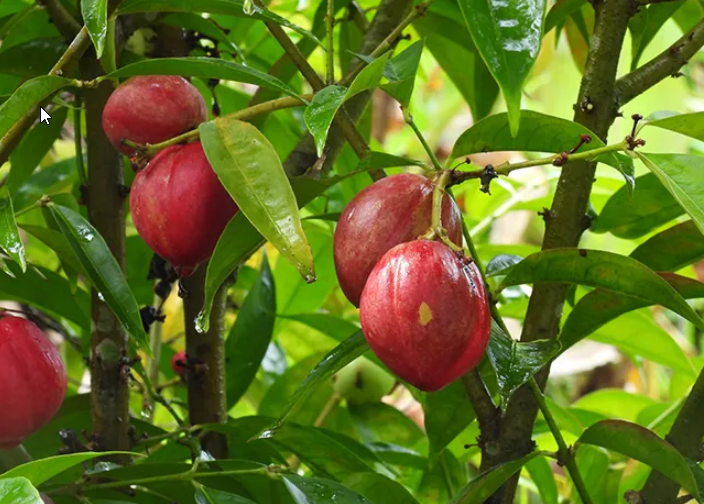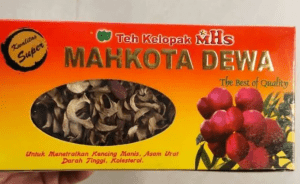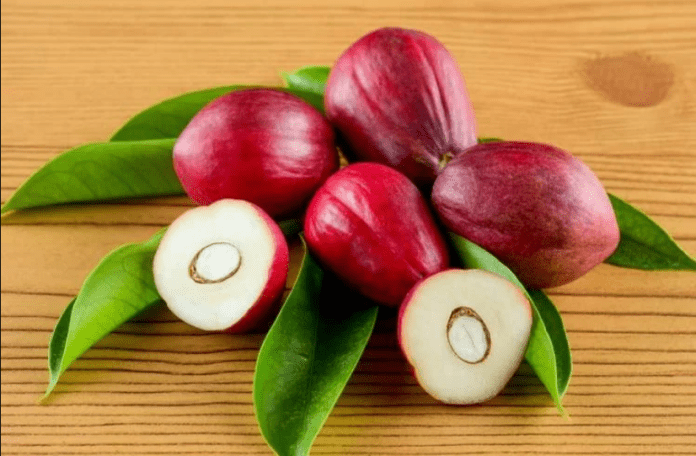Unraveling the Mysteries of Simalakama Fruit: A Dual-Edged Sword of Nature
The Simalakama fruit, known scientifically as Phaleria macrocarpa, and colloquially as the Mahkota Dewa (Crown of the Gods), is a plant steeped in legend and utility, originating from the lush forests of Indonesia. This intriguing fruit has woven itself into the cultural fabric, manifesting not only in the realm of traditional medicine but also in the tapestry of local proverbs, illustrating the complexities and dualities of choice and consequence.
The Origin of Simalakama Fruit
Phaleria macrocarpa is native to the tropical Papua, Indonesia, and has since spread throughout the Malay Archipelago, including Sumatra. Its local names vary, with “Makhota Dewa” in Indonesia and “Simalakama” in Malay cultures, illustrating its revered status as a “Crown of the Gods.” Traditionally, the plant has been cultivated not only for its medicinal properties but also as an ornamental and shade plant, thanks to its dense foliage and attractive white flowers that emit a fragrant smell reminiscent of cloves. In Central Java, this plant used to be found only in the Yogyakarta and Solo palaces.
The maximum height of the Makhota Dewa tree is between 2 and 3 meters. The fruit can grow up to 4 – 6 cm. Inside there are very large seeds. The ratio of fruit to flesh is around 25%:75%. The texture of the fruit is similar to coconut fiber but is not dry. It tastes very bitter and bitter.
When young or unripe the Simalakama fruit is green like the leaves. Then, it turns purple. When ripe, the color is bright red.

Simalakama Fruit in Proverbs
The term “Simalakama” has transcended its botanical boundaries to become a potent metaphor in local proverbs, encapsulating the essence of a no-win situation. “Eating the Simalakama fruit” has become synonymous with facing a dilemma or conundrum, where all available options lead to unfavorable outcomes. This expression mirrors the fruit’s dual nature: while it holds potential health benefits, its consumption without proper preparation can result in adverse effects, symbolizing the delicate balance between benefit and harm.
Medicinal Properties: A Panacea or Poison?
The Simalakama fruit has been heralded as a panacea, boasting a plethora of health benefits attributed to its rich composition of alkaloids, saponins, flavonoids, and polyphenols. These compounds collectively offer anti-inflammatory, antioxidant, antihyperglycemic, and antihistamine effects. Research has highlighted its potential in treating various ailments, including high blood pressure, diabetes, and even cancer, by inhibiting the growth of cancer cells and reducing blood sugar levels.
Some studies in Indonesia indicate its efficacy in prevention and healing process of various other diseases of skin, overcoming drug addiction, rheumatism, increasing stamina, and providing resistance to influenza.
Notably, the fruit contains flavonoids, powerful antioxidants that have been shown to neutralize the nephrotoxic effects of cisplatin, a chemotherapy drug, thereby protecting the kidneys during cancer treatment. Despite its efficacy, the usage of Phaleria macrocarpa must be approached with caution, as its seeds contain potent toxins.
Toxic Properties: A Cautionary Tale
The dual nature of the Simalakama fruit is most evident in its toxic properties. The seeds are particularly hazardous and must be discarded to avoid the risk of poisoning. Symptoms of ingestion can range from mild, such as canker sores, to severe, including potential kidney damage. This inherent risk has cemented the fruit’s status in local proverbs as a symbol of difficult choices, where the line between remedy and toxin is perilously thin.
Traditional and Medicinal Uses
Preparation as Herbal Medicine: To harness its health benefits while mitigating its toxic effects, the Simalakama fruit is often processed into various forms of herbal medicine. The flesh of the fruit, excluding the seeds, is the main component used. It can be dried and ground into powder, infused into teas, or extracted for its juice. These preparations are believed to help with a range of health issues from boosting immunity to treating chronic conditions.

Tea: One of the most common ways to use Simalakama fruit is to make a herbal tea. The fruit is sliced thinly, dried, and then boiled in water to create a detoxifying tea. This method is particularly popular for its simplicity and the ease of removing the toxic seeds.
External Applications: Apart from consumption, the extracts from the Simalakama fruit, leaves, and bark are sometimes applied topically. This is done to treat skin conditions, reduce inflammation, or as a part of traditional beauty regimens.
Complementary Treatment for Chronic Diseases: Given its contents like flavonoids and alkaloids, the fruit is used in complementary treatments for diseases such as diabetes, hypertension, and even cancer. It’s important to note, however, that while there are promising studies, these should not replace conventional treatments without professional medical advice.
Cautionary Measures
Removal of Seeds: Before any form of consumption, the seeds must be meticulously removed to prevent ingestion of the toxic compounds they contain.
Professional Guidance: Due to its potent nature, the use of Simalakama fruit, especially for medical purposes, should be under the guidance of a healthcare professional or a knowledgeable herbalist. This ensures that the benefits are maximized while minimizing the risk of adverse effects.
Scientific Research and Development
Researchers have been studying the Simalakama fruit for its potential in modern medicine, particularly in the fields of oncology and nephrology. For instance, its extract has been investigated for its nephroprotective properties during chemotherapy treatment, highlighting the potential of traditional medicines in complementing modern therapeutic approaches.
The Simalakama fruit exemplifies the rich heritage of traditional medicine, offering potential health benefits when used correctly. Its dual nature—being both medicinal and toxic—underscores the importance of careful preparation and informed usage. Its story, from its origins to its symbolic presence in proverbs and its role in traditional medicine, reflects the nuanced relationship between humans and the natural world. As research continues to unravel the secrets of this enigmatic fruit, it remains a symbol of the delicate balance between benefit and risk, reminding us of the wisdom required in navigating the bounties of nature.






